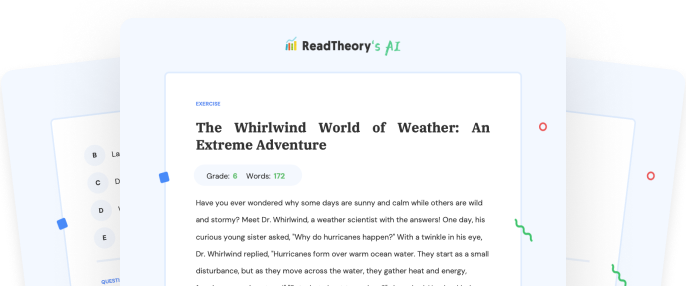Transform Your Teaching
with AI-Powered Worksheets
With ReadTheory’s Instant Worksheet Builder, you can create engaging, grade-appropriate worksheets tailored to your students in minutes. Spark curiosity, save time, and empower critical thinking with AI-powered tools designed for teachers like you.


Voices of Diversity: The World of Minority Languages
Languages are more than just tools for communication; they are carriers of culture, history, and identity. But did you know that, out of approximately 7,000 languages spoken worldwide, many are spoken by only a small fraction of the global population? These are called minority languages. From the lilting Celtic tongues of Ireland to the nuanced click languages of the San people in Africa, these minority languages are as diverse as the communities they represent. They are preserved through oral tradition, music, literature, and, increasingly, digital preservation efforts. But why are these languages important? For one, they are a part of our global heritage, a tapestry of human civilization. Their loss would mean losing unique ways of viewing the world. They also carry significant cultural knowledge, especially around local ecology and medicinal practices. However, many of these languages are at risk of extinction as younger generations are opting for more globally dominant languages. This language shift, while practical, poses a significant threat to cultural diversity and the richness of our global linguistic heritage. In conclusion, these minority languages, though spoken by few, carry enormous weight in the cultural and historical diversity of our world. Their preservation is crucial for maintaining the vibrant mosaic of human civilization.
Question 1
What are minority languages?
The main languages spoken worldwide
Languages spoken by only a fraction of the global population
Languages that have been extinct
Languages that are not used in communication
Languages that are new to the world
Question 2
Why are minority languages important?
They are easier to learn
Only they can be used in music and literature
They carry significant cultural knowledge and offer unique ways of viewing the world
They are the languages of the future
They make communication more difficult
Question 3
What is the main threat to the survival of minority languages?
The internet
Music and literature
Younger generations opting for more globally dominant languages
Oral tradition
The introduction of new languages
Question 4
Which of the following is not a method of preserving minority languages?
Oral tradition
Music
Literature
Ignoring them
Digital preservation efforts
Question 5
What will the loss of minority languages mean?
Losing unique ways of viewing the world and significant cultural knowledge
Improving global communication
Reducing language complexity
Increasing the dominance of major languages
Nothing significant
 or share via
or share via

Assign the ReadTheory pretest to determine students' reading levels.

Why Teachers Love
Instant Worksheet Builder?

Tailored Content for Every Student
Craft worksheets with passages and multiple-choice questions customized to your chosen topic and grade level, ensuring relevance and engagement.

Save Hours
of Prep Time
Our AI, Lexi, generates complete worksheets—passages, questions, and answers—in minutes, freeing you to focus on teaching, not planning.

Standards-Aligned Learning
Every worksheet is designed to boost reading comprehension and critical thinking, aligning seamlessly with State Standards to help your students shine.
Personalized teaching
for personalized learning
Browse worksheets created and refined by educators using Lexi—your source for inspiration and ready-to-use resources.


ReadTheory is free for Teachers to use.
Join thousands of educators using ReadTheory for free. Sign up today and start creating in just minutes!





